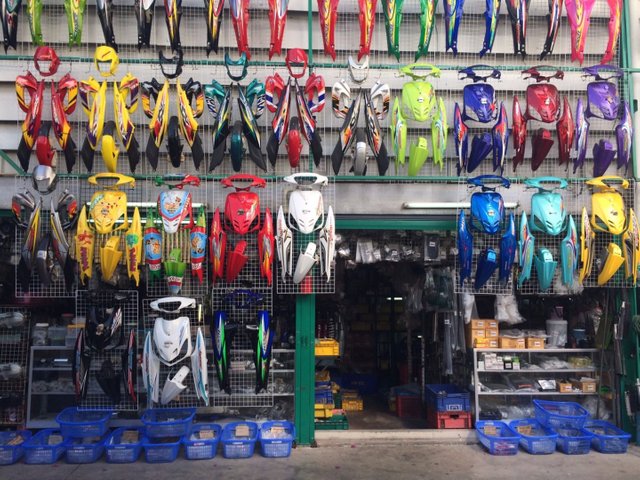Locate Competitive Rates on Motocross Parts NZ for each Bike
Locate Competitive Rates on Motocross Parts NZ for each Bike
Blog Article
Grasping Motorbike Gears: How to Maximize Your Riding Experience
In the realm of motorcycling, grasping the art of gear control is critical for enhancing your riding efficiency. Correctly using and recognizing motorcycle gears can considerably impact acceleration, control, and fuel effectiveness, changing a typical trip into a smooth, thrilling journey. By incorporating exact change timing and adapting equipment option to different roadway problems, riders can ensure ideal engine efficiency and safety. The nuances of clutch control, throttle sychronisation, and gear auto mechanics bid a much deeper exploration, assuring to unlock the complete possibility of your maker. Just how can these methods be taken advantage of to really maximize your riding experience?
Recognizing Equipment Mechanics
At the core of motorcycle dynamics, gear mechanics play a crucial role in transforming engine power into movement, eventually dictating rate and control. The equipment proportions, meticulously made, establish the partnership between engine transformations and wheel turns, affecting acceleration and fuel efficiency.
Recognizing gear technicians begins with identifying the significance of the gearbox, which houses numerous gears of varying sizes. These gears engage with a process called meshing, where teeth of various gears engage to send power. The precision of this interaction is important; any imbalance or damage can result in inefficient power transfer, preventing efficiency. In addition, the arrangement and size of gears affect the motorbike's capability to manage various tons and speeds.
Moreover, the principle of equipment moving is important to maximizing efficiency. Smooth and prompt changes guarantee that the engine operates within its optimal power band, stopping unnecessary pressure and improving longevity (moto parts nz). By comprehending these mechanical intricacies, motorcyclists can attain an unified mix of performance, power, and control, raising their riding experience
Timing Your Changes
Shift timing mastery is essential for maximizing bike efficiency and improving the riding experience. Effectively timed changes guarantee that the engine operates within its ideal power band, which is important for maintaining control, attaining smooth acceleration, and guaranteeing the long life of the motorcycle. Cyclists need to establish an instinctive sense of when to move gears, which entails recognizing the partnership in between engine changes per minute (RPM) and speed.
To grasp shift timing, pay attention to the engine's noise and really feel, as these offer vital ideas concerning when to transform equipments. The perfect shift factor usually happens when the engine approaches the top variety of its power band without getting to the redline. Changing prematurely can cause an absence of power, while changing too late may cause unnecessary engine strain
Additionally, roadway problems and riding style influence shift timing. In contrast, during freeway riding, less changes at greater speeds can be more ideal.
Enhancing Gas Effectiveness
While understanding motorcycle gears is critical for efficiency, boosting gas effectiveness is equally important for both environmental and economic reasons. Optimal gas intake not just reduces operational expenses however likewise reduces the environmental footprint of riding. To achieve this, one should recognize the complex partnership in between gear option and engine efficiency.
Firstly, picking the appropriate gear at suitable rates can dramatically pop over here affect gas usage. Riding in a higher equipment at reduced rates can result in engine motorcycle supply hauling, which is damaging to both gas economic climate and engine wellness. Alternatively, riding in lower gears at high speeds leads to unneeded fuel usage. Therefore, keeping an optimal balance by shifting gears in positioning with road problems and prepared for maneuvers is vital.
In addition, regular upkeep plays an essential duty in gas efficiency. Guaranteeing that the motorbike is well-tuned, with tidy air filters and effectively inflated tires, can enhance aerodynamics and reduce fuel waste. Taking on a riding style that accepts gradual acceleration and smooth slowdown can add to far better fuel economic situation.

Techniques for Smooth Transitions
Accomplishing smooth equipment changes is fundamental to enhancing the riding experience and making sure the long life of a motorcycle's transmission system. Correct equipment shifting not only contributes to a seamless ride yet likewise lessens wear and tear on the mechanical parts. To understand the art of smooth shifts, cyclists need to concentrate on a couple of key methods.

Secondly, clutch control plays a pivotal role. Engaging and disengaging the clutch smoothly needs method. The clutch lever need to be launched slowly, permitting a smooth transfer of power from the engine to the wheels without creating a shock or abrupt movement.

Adapting to Road Conditions
Navigating varied roadway problems is a crucial skill for any type of motorcyclist aiming to maintain control and security. Whether you're riding on wet surfaces, gravel roads, or browsing sharp turns, your capability to adjust your equipment use and riding strategy is critical. Recognizing just how to change your equipments suitably can significantly impact traction and stability, ensuring a more secure trip.
On wet roads, it is recommended to keep higher equipments to decrease torque and lessen internet wheel spin. This approach helps preserve hold on slippery surface areas, permitting smoother velocity and slowdown. On the other hand, when riding on crushed rock or unequal terrain, reduced equipments are more suitable. Reduced gears give better control and permit you to react even more quickly to unforeseen changes in the roadway surface.
Sharp curves demand specific gear monitoring to balance speed and control. Downshifting prior to entering a curve can aid maintain energy while ensuring the motorbike continues to be stable throughout the turn. Constant technique in varied conditions boosts your ability to anticipate and react to modifications in roadway appearance and incline.
Final Thought
Understanding motorcycle equipments significantly boosts the riding experience by improving velocity, fuel, and control effectiveness. Adapting gear selection to different roadway problems, such as using greater gears on damp surface areas and lower equipments on gravel, more boosts handling and safety.
Comprehending gear mechanics starts with acknowledging the relevance of the gearbox, which houses several equipments of varying dimensions. These equipments engage with a procedure understood as meshing, where teeth of different equipments involve to transfer power (motocross parts nz). Gentle modifications to the throttle throughout equipment changes can stop jerky activities and preserve a regular riding rate
Whether you're riding on damp surface areas, gravel roadways, or navigating sharp turns, your ability to adapt your gear use and riding technique is paramount. Adjusting gear option to different roadway conditions, such as making use of higher equipments on wet surfaces and reduced equipments on gravel, additional improves handling and safety and security.
Report this page